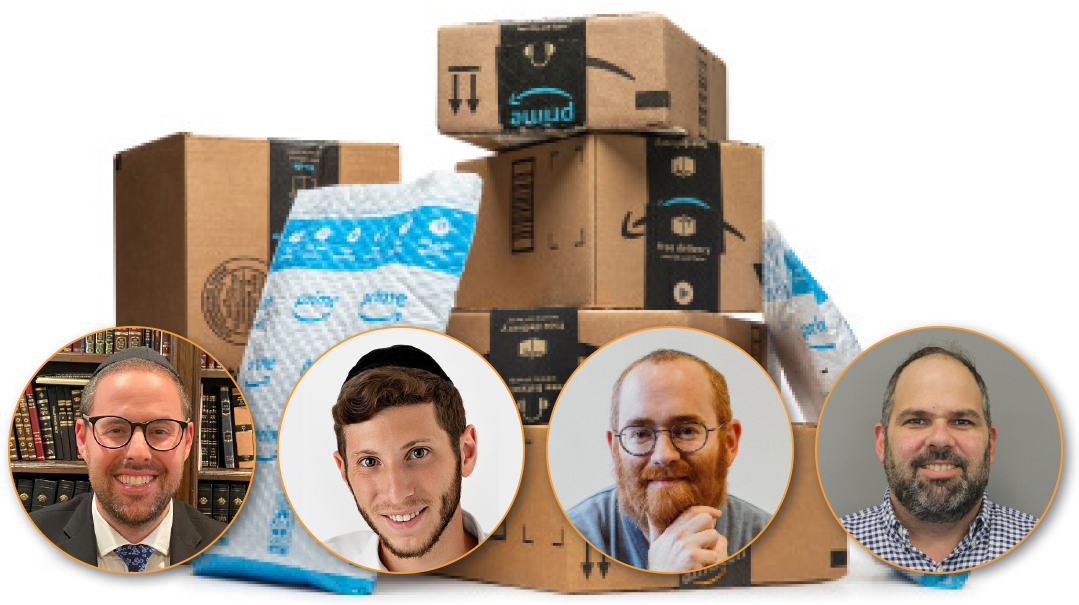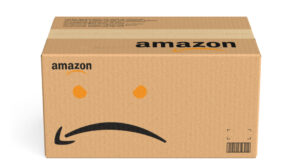Unboxing Amazon
| April 21, 2021It’s a jungle out there — don’t jump in unawares

In July of 1995, Jeff Bezos opened an online bookstore called Amazon. Today, he’s the richest person in the world, and the success isn’t limited to him alone. Amazon-selling is considered a widely accessible business venture with incredible potential for sellers. But before you open your own Amazon storefront, here are 13 myths, facts, and figures that you need to know. It’s a jungle out there — don’t jump in unawares.
- It’s not easy money. “It used to be,” says Motty Hoffmann, Amazon seller and director of the Red Moose shoe care brand. “There was a time when you could buy a few units of any product, drop-ship it directly to Amazon, then mark it up by a couple of percent and you’d make a nice profit.” But Amazon eventually instituted more restrictions and today many large brands are gated — making formerly hot categories like electronics harder to crack.
“When you tell most people that you do Amazon, you can see them wondering just how well you must be doing,” shares Motty. “It’s not that simple. Yes, I know guys who are making millions a month, but I also know some small businesses that are really struggling.”
If everything goes smoothly, Amazon is easy to deal with. But the second you run into even a bit of trouble, they’ll come down hard. Amazon can shut down your account literally overnight. You can be an established seller with years of million-dollar revenue — until a customer lodges a complaint or another seller reports you. And then, at the touch of a button, your account is shut down and your livelihood is suspended.
“Amazon reserves the right to cancel accounts on a whim and they can be monsters about it,” explains Avi Weber, the director of growth and partnership at New Rain USA, a company that manages Amazon accounts for sellers. And if they close you down, you’ll have hundreds of thousands of dollars of inventory just sitting there. You can’t make money off it, and you may even be losing money from fees like storage. “To you it’s a million dollars, but to Amazon it’s a drop in the bucket,” he says.
The only way out is what one seller described as “pleading guilty and begging for mercy.” In fact, reopening accounts is so difficult that there are businesses dedicated to this purpose. For Amazon sellers relying on their business for parnassah, the suspensions can be cataclysmic.
“People think that Amazon is about buying a laptop and making money, but they don’t anticipate how frustrating the day-to-day of running an Amazon store is,” says Noah Gross, founder and CEO of Refund Sniper, a company that audits Amazon accounts to find missing funds for sellers. By signing on to be a seller, you’re handing the keys of your business to a large corporation. Amazon controls your customer service, your storefront, and they can change pertinent policies with nothing more than an email. “Ninety-five percent of the variables are out of your control. There’s little you can influence. They can wake up tomorrow and decide to cancel all third-party selling and, just like that, they will put their three million third-party sellers out of a job.”
- But there’s a method to the madness. “You’ll get much further if you play the Amazon game,” Noah explains. “At the end of the day, Amazon’s platform can help your business get very far, very fast. Theoretically, with Amazon, you can start your business in three days. If you went the route of opening your own website, you’d spend tens of thousand of dollars on advertising and still get nowhere near as far.”
Still, selling on Amazon is more complicated than buying closeout and selling it for a little cheaper than the next guy. The market is shifting away from third-party sellers, and vendors today need to be prepared to build the entire product from scratch: planning, creating, manufacturing, marketing, and more.
And it’s harder and harder to get started. After COVID, the online world picked up. Everyone wants a piece of ecommerce, the future of shopping. That means that Amazon can afford to be picky about who they work with. “Everyone wants in,” Avi says. “Because of that it’s harder and harder to get approved for a new seller account.” And you can’t have more than one Amazon seller account. “They’ll catch on to it,” he warns. “They’ll track you down to your IP address.”
- If you can break in, the riches are in the niches. “The industry has changed a lot, especially when it comes to private-labeling,” says Mendel Raskin, founder and CEO of Kook, a kitchenware company. “When I started there were more opportunities, but a lot of those spaces have been closed and now you either need to find the smaller gaps or compete on existing products.” And don’t look for flashy products, Motty stresses. Often, it’s items like toilet plungers that will make you money.
- Amazon can be cutthroat. “In the Amazon of the olden days, going back seven–eight years, you could become successful selling whatever you wanted,” Motty says. Today, most products are quickly knocked off by cheaper Chinese sellers, who can produce much faster and with less of the overhead.
But competing isn’t as simple as dropping your prices. You won’t get anywhere by copying another product, Mendel says. “People look to sell whatever they see is selling well elsewhere, but you won’t succeed that way.” Don’t compete on price. If you get into a bidding war, the Chinese companies will win you.
- Product knowledge is paramount, Mendel says. You have to know your product line well and research ways to add value. “Think about ways to do it differently or better.”
It’s easy to do research on your products. Often, it’s as simple as reading your competitor’s reviews, Noah points out. Read the reviews, take note of what people complained about, and then customize your product accordingly. “There’s a lot of good data available if you’re intuitive about it,” he says.
And don’t think that you know better than your customer, Motty adds. If you see people commenting on the same feature time and again, listen to them. They are probably right and making that adjustment will push you ahead. “Don’t rely on your old bestsellers,” warns Motty. “You need to develop and add more products to keep your business healthy.” And know when to drop a product. “Sellers get emotionally invested, especially when a product used to be a best-seller,” says Motty. “There’s a decline in sales, so you try to lower the price, then you decide to advertise just a bit more, and before you know it, you’re down the rabbit hole and losing money on the product. You need to know when to cut products from your line.”
- Build a Brand “Do it the right way,” Motty emphasizes. “Invest in good branding, packaging, and a quality product. You have to be ready to devote a lot of time and patience. If you’re skipping the branding and looking to sell just another product, you’ll have a harder time competing.”
Avi stresses that if you’re a new seller, investing in marketing is crucial. Your product is not going to go anywhere without marketing. You need to be willing to invest in Amazon marketing campaigns to get yourself noticed. And 50 percent of all ecommerce searches begin right on Amazon, he says — even if people won’t buy your product there, it gives you great brand recognition. The awareness can drive your traffic to other platforms, so if you do it right, Amazon can be a free billboard. It’s worth investing in your marketing for this alone.
You need to invest in your listings too. The competition doesn’t only come down to dollars and cents. According to Avi, consumers will happily pay a dollar more — if they trust that it will be more for their money. “Make sure you have top-quality listings with videos, pictures, reviews, customer feedback, and Q and A. If people look at your product and see that they can rely on it, they will be comfortable paying more.” But do it right the first time. “You can get royally messed by not doing it properly the first time — if you have to backtrack to edit and resubmit, the process can get really prohibitive.”
- Know your numbers. That means understanding the fees, the cost of selling, your return ratio, the cost of damages, and anything else that will affect your margins. “A lot of people miss this point,” Motty says. Amazon’s fees are high. If you miscalculate or forget to factor in a fee, your margins will shrink significantly and you’ll walk away with a minimal or even a negative return.
Sometimes though, sellers are losing money and happy about it. “It doesn’t seem to make any sense that they choose to make zero profit,” Avi explains, “but sometimes your costs are high at the start and you plan to drive them down as you make more sales.” It can be a risky investment, but worthwhile if it pays off.
- The fewer returns, the better. Returns cost sellers money. If you want to get ahead, Motty suggests finding an item or industry with a minimal return rate. While electronics have close to a 50 percent return rate, items like plastic paper goods are barely returned at all.
- Amazon’s internal systems are not foolproof. The calculations are so complex with so many factors, and it’s common for details to fall between the cracks. Noah started his company back when he was an Amazon seller himself. “A decade ago, I had a spice company where we bottled, blended, and manufactured for retailers around the country. I eventually started messing around with selling on Amazon, but the numbers weren’t adding up. Something didn’t make sense with my profit margins. I spent a lot of time looking through the backend of my account and uncovered thousands of dollars.” When a friend heard about Noah’s success, he asked Noah to take a look at his account too. $21,000 in found funds later, Noah had a new business venture — helping Amazon sellers audit their accounts and recoup funds that fell through the cracks.
“A few years ago, I was speaking to a seller about Refund Sniper and he signed up out of curiosity,” Noah shared. “He figured that some of his inventory was getting lost, but he thought it wasn’t more than one or two items a year.” In fact, the real number of lost inventory items was closer to 1,700. Because running an Amazon account involves so many moving parts, sellers don’t always keep tabs on the minutia — which equals lost revenue.
- Round the clock, round the globe. Inherent in Amazon selling are difficulties you won’t find in other careers. For one, it isn’t a nine to five profession. “Most jobs end at a certain hour,” says Motty. “If you’re a mortgage broker, you can’t call banks in the evening. The job eventually stops for the day.” But Amazon businesses need minute-to-minute maintenance. “If you miss a crucial email or don’t address certain issues right away, your business can get shut down pretty quickly.”
Then there’s the language barrier. Many Amazon sellers deal with manufacturers overseas, often in China. Motty says to keep the time and language differences in mind. “I can send them all the details and documentation, but they won’t respond until it’s their day, and by then I’m going to sleep. If you don’t catch them at the right time, things can drag.”
(Originally featured in Mishpacha, Issue 857)
Oops! We could not locate your form.













